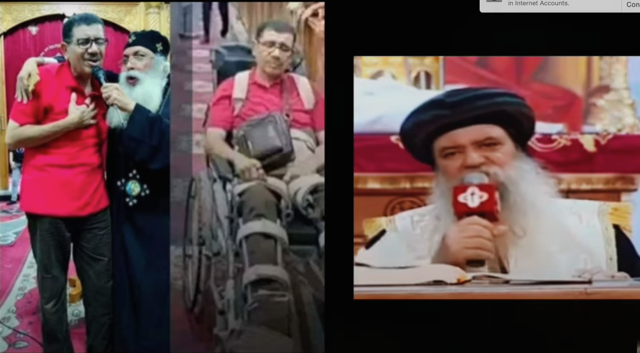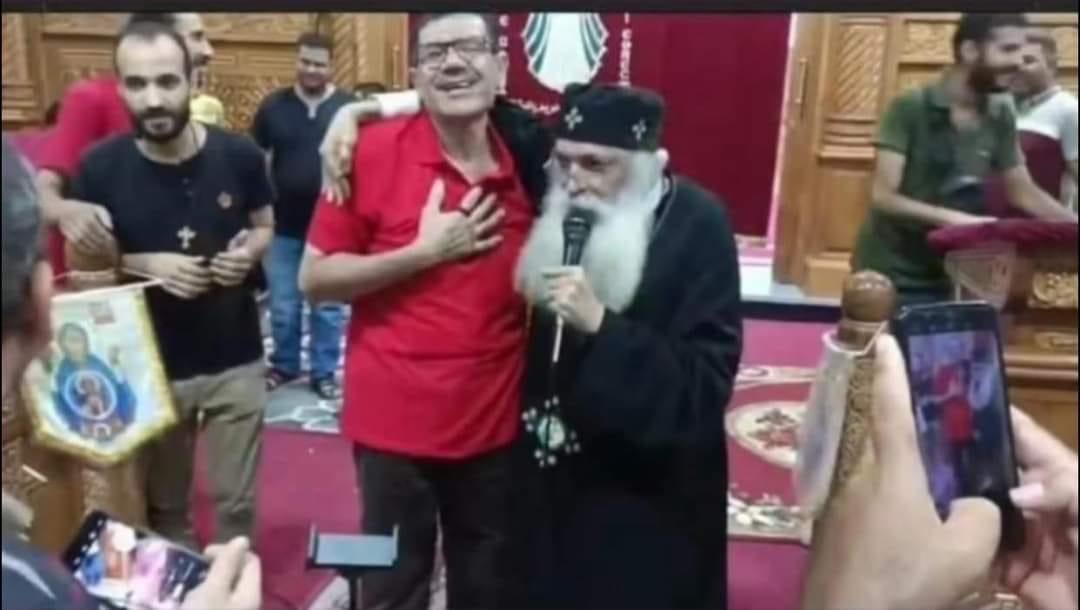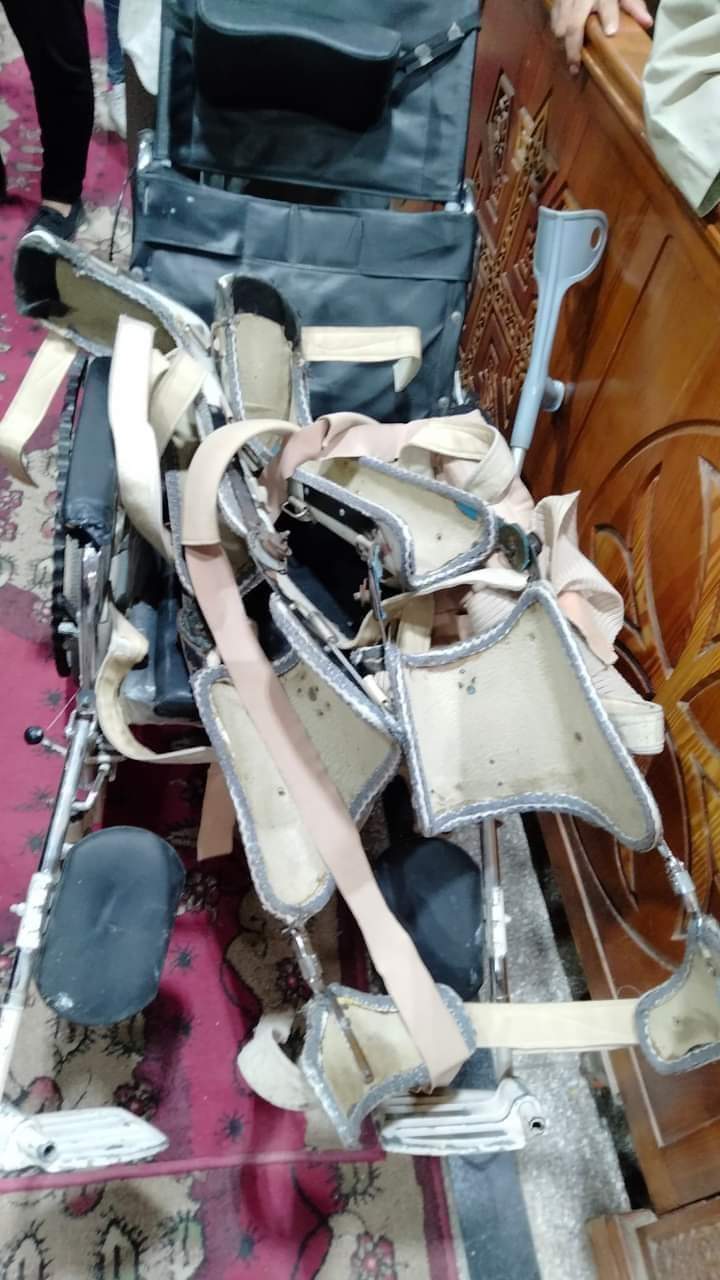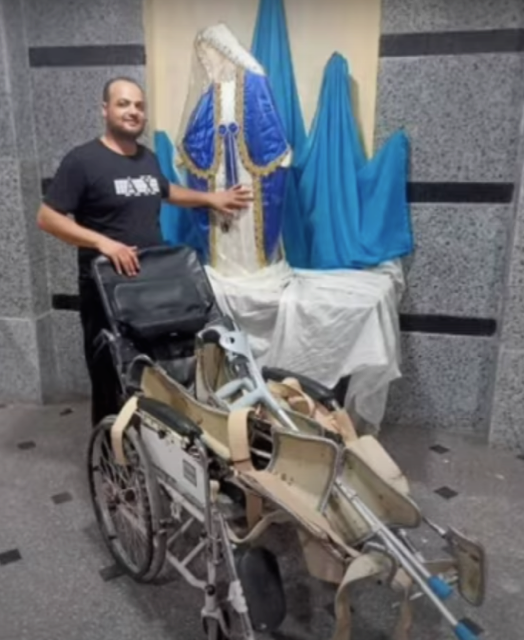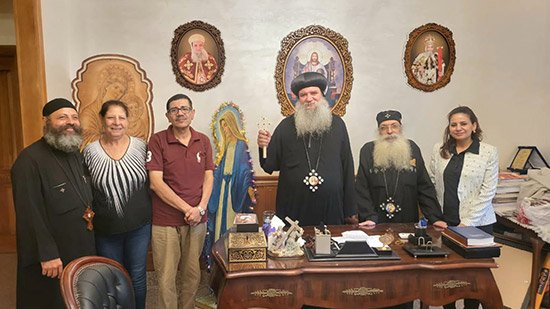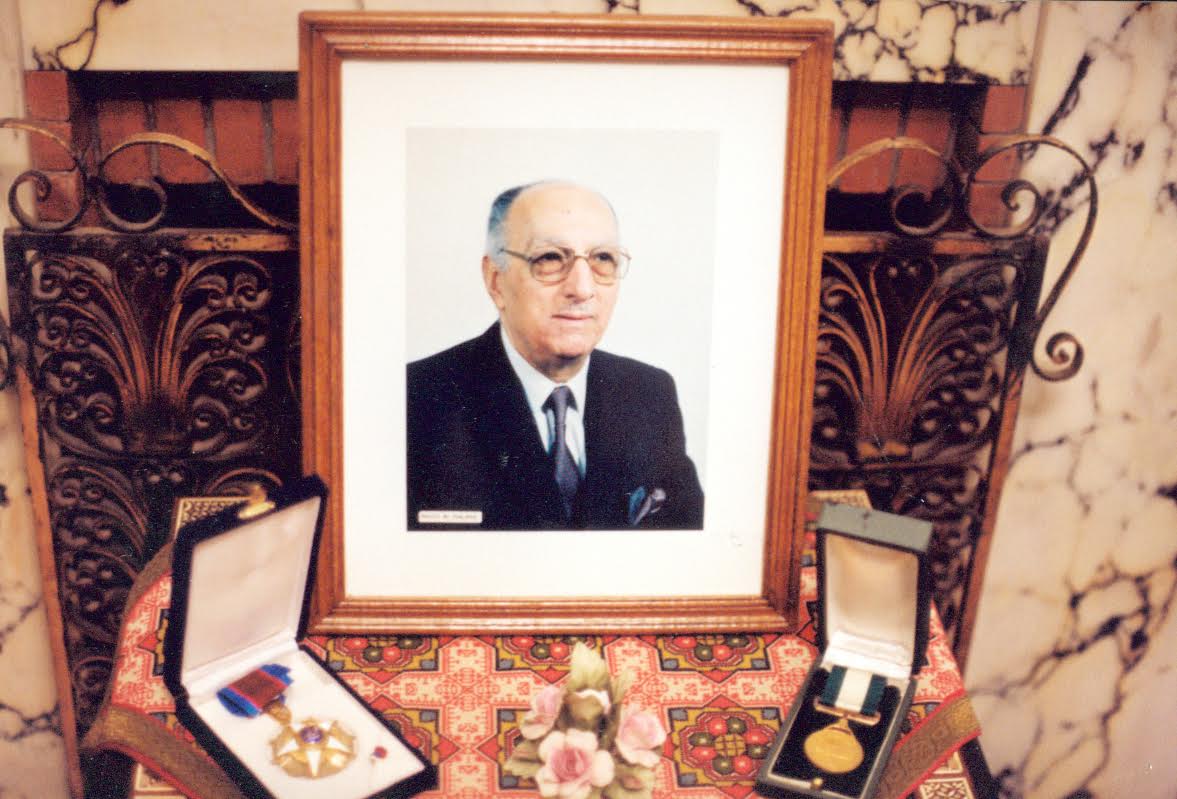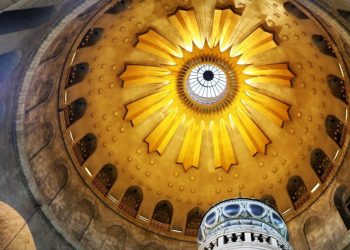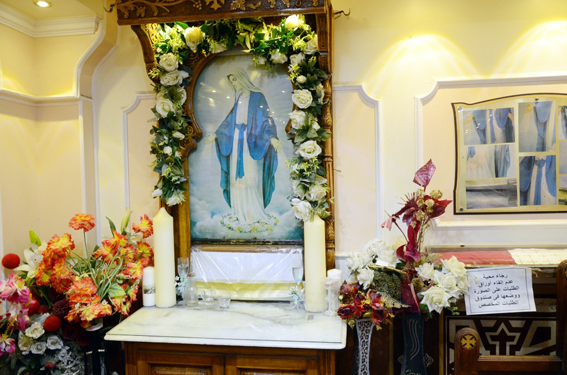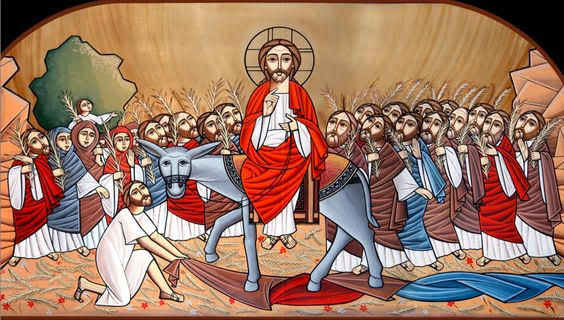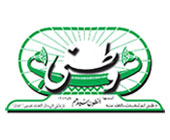The video footage was stunning. On the side of the middle aisle of the nave of a church, a quadriplegic lay strapped to his wheelchair. It was the evening of 13 August 2023 and the man, who looked to be in his fifties, had been taken by friends to church to attend the “spiritual awakening” service commonly held during the Holy Virgin’s Fast. The ceremony usually starts with Vespers incense service, then moves on to praises chanted for the Holy Virgin, a Bible reading and a sermon. The man in the wheelchair lay still; he had been wheeled onto the side of the middle isle because there was obviously no other space to accommodate the big wheelchair; the church was packed full of worshippers as is usual during spiritual awakening services. As silence wrapped the church while the congregation listened to the sermon, the man, who was unable to speak, began to audibly mutter. He later explained that he had seen a vision of light of the Holy Virgin for a swift two seconds. “I thought it was just in my head,” he said, “perhaps because I wished it so much. She disappeared, then the light appeared again, but this time she was bigger and the vision lasted for some five seconds, then again disappeared. But she appeared a third time; this time she stood tall in front of the sanctuary in full human height. She sent me a clear message: ‘Get up, get up and stand’. My feelings then were indescribable, I had to get up, I pulled myself together to do so; when I did that, she disappeared.”
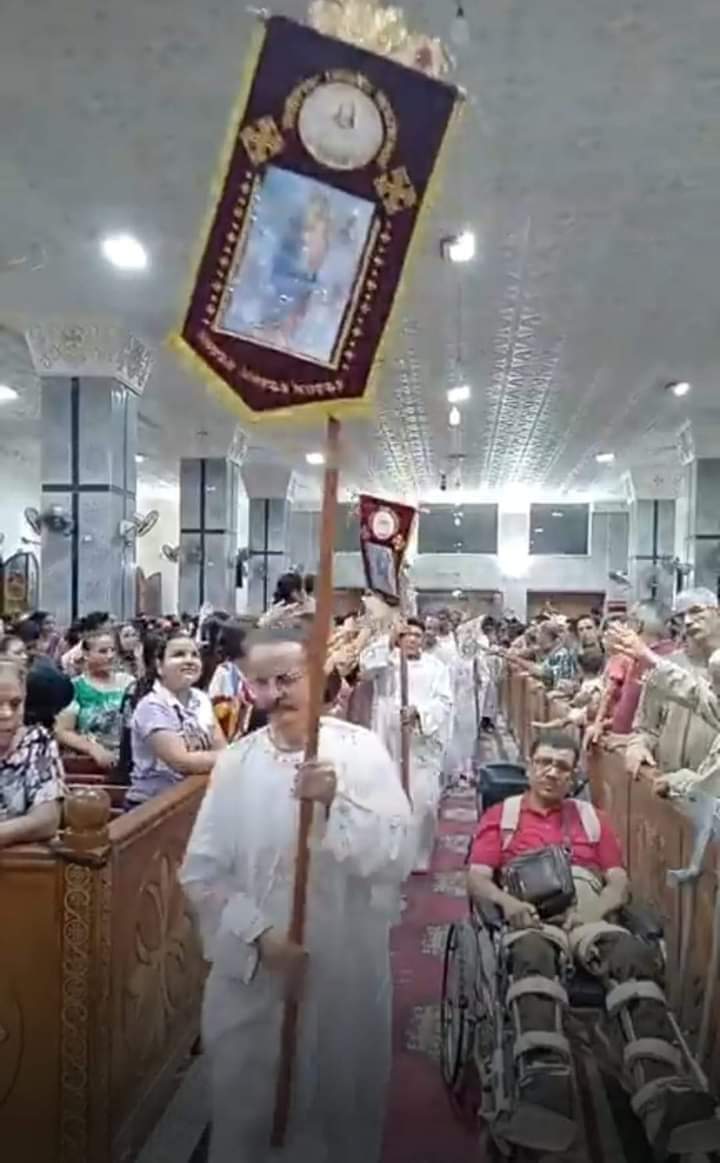
The man had muttered “The Virgin! Here’s the Virgin!”. He quickly began to undo the straps that were holding him in place, and his feet started moving. He cried out in disbelief “I’m well! I’m well! I’m healed!” Everyone heard, and some young men rushed to help him unstrap himself. Once free, he hurled himself out of the wheelchair, running forward. He stumbled, but got up, ran forward to the priest, Fr Angaelos Aziz, and started embracing him as he cried: ‘The Virgin has healed me, the Virgin has healed me!’ By that time, the congregation realised what had happened; they broke into uncontrollable applause and cheers. They chanted at the top of their voices praises for the Holy Virgin, the women ululating in joy.
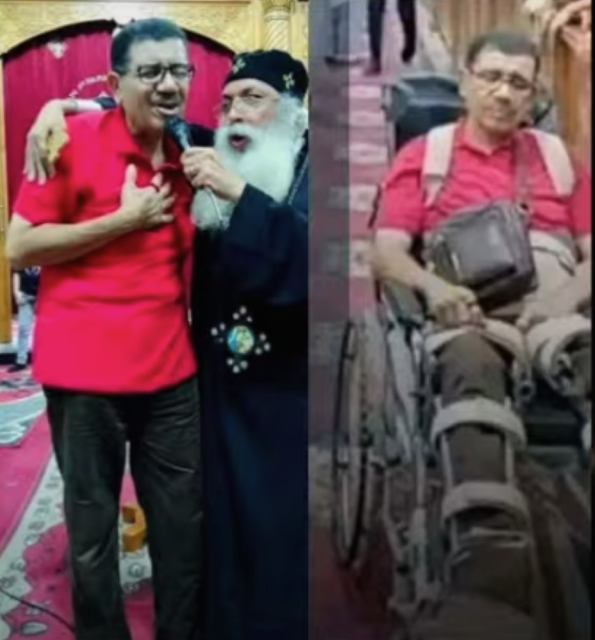
The incident, which was captured on video and went viral on social media, occurred at the church of the Holy Virgin and Pope Kyrillos Pillar of the Faith in Ezbet al-Nakhl in eastern Cairo. The man is Adel Fayez; a retired military engineer who is very well known to the church’s congregation given that, seven years earlier, he had been among the most active servants in the church.
Once the miracle became known, Mr Fayez was hosted on the Christian satellite TV channel CTV. Armed with files of medical reports, investigation results, and radiology images, even the medication he had been on, he explained in detail his full story.
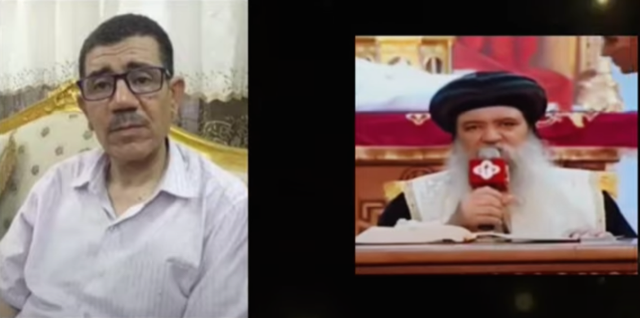
Mr Fayez said he had had a fall on the stairs some seven years ago, “seven years minus 17 days, to the day” he said, that left him with a back injury. Subsequent unfortunate complications led to a serious spinal injury that gradually escalated causing full paralysis; he became a quadriplegic. His condition kept on deteriorating until, some 13 months ago, he even lost his ability to speak. He was left with only his right eye, ear, and hand functioning. He explained that he could only write what he needed with great difficulty on a small board but that even this became increasingly difficult as he increasingly lost focus. His family consulted many doctors, some of them in Egypt, and others outside Egypt, in the US, Germany, and Austria. The verdict was unanimous: nothing could be medically done to improve his condition. His Cairo doctor told him that the utmost he could do was to attempt to hinder further deterioration, but even that appeared to be not working.
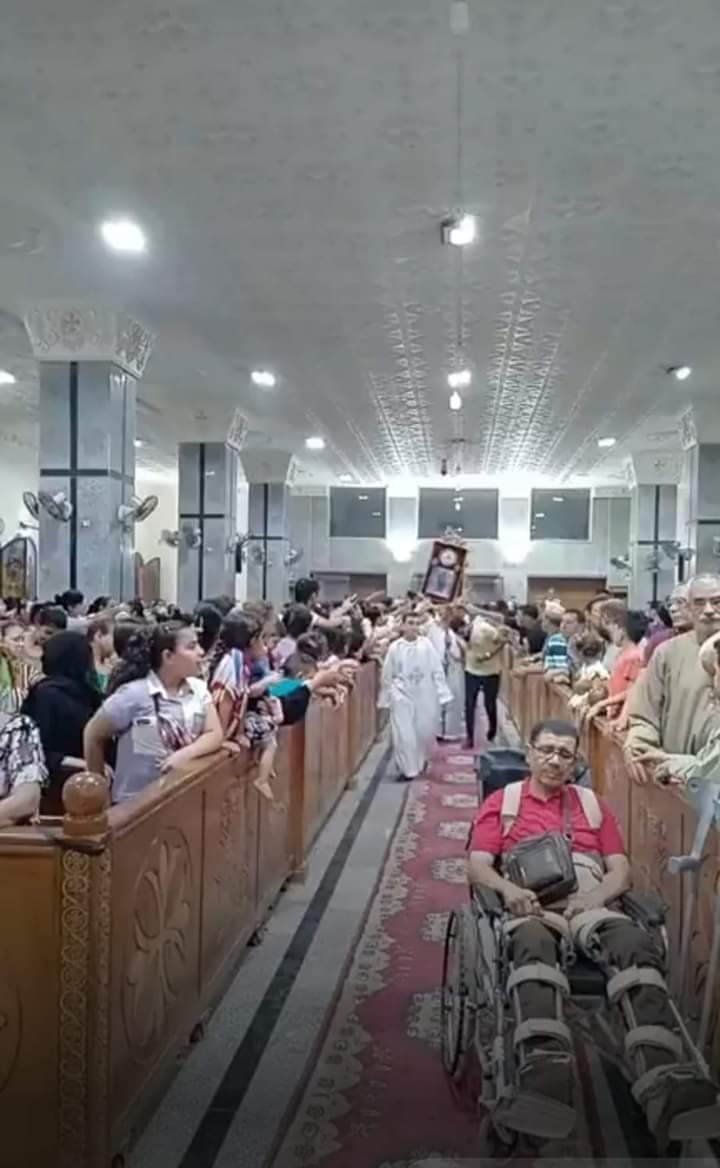
Diagnosed with increasing brain damage, and atrophy of almost all his muscles, Mr Fayez was not only housebound, but also bed bound. Priests used to take the Eucharist to him at home, which gave him, he said, incalculable joy. “I had an uncanny certainty that, despite all the deadly damage in my body, I would somehow walk again even for a few minutes before I died.”
On 6 August 2023, Mr Fayez said, just one day before the Fast of the Holy Virgin from 7 to 21 August, he felt a great desire to go on pilgrimage to churches of the Holy Virgin. “A chauffeur would be able to take me” he thought. But it was a wish he could not even voice. So he was stunned when, the following day, a young man from church, who was very dear to him and who visited him regularly, called him to say he would take him to the church of the Holy Virgin in Mostrod, a church built on a site in which the Holy Family had rested on its biblical flight into Egypt when Jesus was a baby. Despite extreme pain, Mr Fayez said, he was very happy to be taken on that visit, which was followed by other visits to other Holy Virgin churches that also stood on spots the Holy Family had trodden. But a very strong voice inside him, “a voice that drowned all others, kept on insisting: ‘Go to your church in Ezbet al-Nakhl’.” He explained that even though he lives in Maadi, south of Cairo, he had always kept a flat in Ezbet al-Nakhl close to the the church he had always served before his infirmity.
Obeying this compelling message, Mr Fayez asked to be taken to the church in Ezbet al-Nakhl. The surveillance cameras on the church gate show him being disembarked in front of the church and wheeled inside where he was parked in his wheelchair in the centre aisle of the church to attend the service. The rest is now history.
Mr Fayez directly regained his full faculties. A patient who spends a few weeks in bed or has a limb plastered would normally need physiotherapy to be able to regain normal motion, but Mr Fayez, in front of everyone, was running in church following seven uninterrupted years in bed. He spoke clearly and coherently following his inability to speak some 13 months earlier. It was nothing if not absolutely amazing.
The young members of the congregation wished to take Mr Fayez home in a joyful procession [this being an entrenched Egyptian tradition]. But he strongly overruled the proposition because, he explained, a very sad incident had occurred in a nearby street, of a young man who had taken his own life. That evening, his bereaved family were receiving condolences, and it was not right that a joyful procession should pass them, ignoring their pain and grief, he said. So, Fr Angaelos took Mr Fayez home quietly in a roundabout route in order to bypass the condolence site. However, only 15 minutes following his arrival home, word was out about the miracle, and the entire neighbourhood, including the mourners, broke out in joyful cheers and resounding ululations.
Mr Fayez said he would leave his wheelchair and strappings in the church till the Holy Virgin’s Feast on 22 August, following which he would keep them, together with all the medical documents proving his infirmity, in a special place in his home.
Mr Fayez thanked God first and foremost, also everyone who had emotionally supported him during his illness, especially the church priests, servants, and congregation. But first, he said, he profusely thanked his wife of 43 years for her unparalleled dedication and immense, loving care all through the hard times he went through. “She never once complained!” he said.
In reply to a question of what he can tell any invalid suffering the ravages of disease, Mr Fayez said: “A monk once told me, ‘When you are on your back, you can see God’. I really loved this. Because in my most painful moment I could indeed feel Him with me, giving me peace and joy … these seven years have been for me “Life” in the full sense of the word. I cannot express it in any other way.”
Official confirmation
Anba Sidaros, Bishop-General of Ezbet al-Nakhl, publicly confirmed that Girgis Fayez, who is famous as Adel Fayez, has been a quadriplegic for some seven years, as proved by medical documents and by the testimony of the priests and congregation members of the church of the Holy Virgin and Pope Kyrillos Pillar of the Faith.

Anba Sidaros said that Mr Fayez was cured by a miracle that occurred in the church. He said that the National Security has investigated the case through looking into the medical documents and hearing witnesses, and have confirmed the seven-year illness and miraculous healing. “Had the story proved incorrect,” Anba Sidaros said, “Mr Fayez should have been arrested. But his claims proved to be correct.”
When is a “miracle” a miracle?
A 15-minute video posted on the Coptic Orthodox Youth Bishopric’s Apologetics Ministry shows Father Matta Badie discussing the question of miracles in the broader sense.
What is a miracle? Fr Matta defines it as an exceptional event in which God intervenes in a situation to achieve a result that is totally unexpected or is impossible to achieve under normal conditions. A miracle defies all reasonable explanation, despite there being evidence for its occurrence.
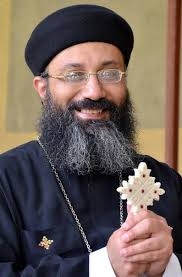
There are three conditions for a miracle to occur, Fr Matta says. Firstly, there would be a reason or wisdom behind its occurrence; God is not haphazard, and there always are specific reasons and objectives for Him to work miracles. Second, there must be unshakable evidence that a miracle occurred, evidence that can defy all doubts. Third, there must be a purpose or aim behind that miracle; the aim may be for the individual, or it may be a collective one for masses of people.
Fr Matta quotes as an example the manifestation of the Holy Virgin on the domes of her church in Zaitoun, Cairo, in 1968. Back then, when word got out about repeated manifestations, Pope Kyrillos VI formed a committee that included Metropolitan Athanasius of Beni Sweif and Anba Gregorious, Bishop of Scientific Research, to investigate the matter and report to him. They saw first hand the Holy Virgin’s manifestation and described it in full detail, also cited the testimonies of Christian and non-Christian observers of the incident, and recorded events of miracles experienced by many who were present during the manifestations, evidenced by authenticated medical reports and documents in cases of miraculous healing. The Coptic Church then issued an official recognition of the manifestations.
Another proof that some miraculous incident is really a miracle worked by God is the effect it has on the subject of the miracle and the masses who witness it. This effect, Fr Matta says, should be positive, in the sense that it should fortify the individual’s and the collective relation with God; it should work for salvation of souls. When Jesus worked miracles, he said, it was not for people to see wonders and applaud them as some in the crowd or as Herod the King himself wished; it was to proclaim His power as God for the people to believe He was the one with God. It was also to bring salvation to those who He healed or raised from the dead, and to those who saw or heard of these miracles. He always connected His miracle work to faith, frequently saying: “Your faith has saved you” or “your sins are forgiven”. The miracles He performed were for the glory of God. In conclusion, Fr Matta says, anything that weakens a person’s relation with God, anything that focuses on the miracle per se but not on God, anything that does not glorify God’s name, is no miracle and has to be ignored.
Finally, Fr Matta draws attention to the fact that everything in the world we live in and so many incidents in our daily lives speak of the wonders lovingly created and made by God. “Contemplate on this,” he says, “and your eyes will see endless miracles, big and small.”
Watani International
20 August 2023
